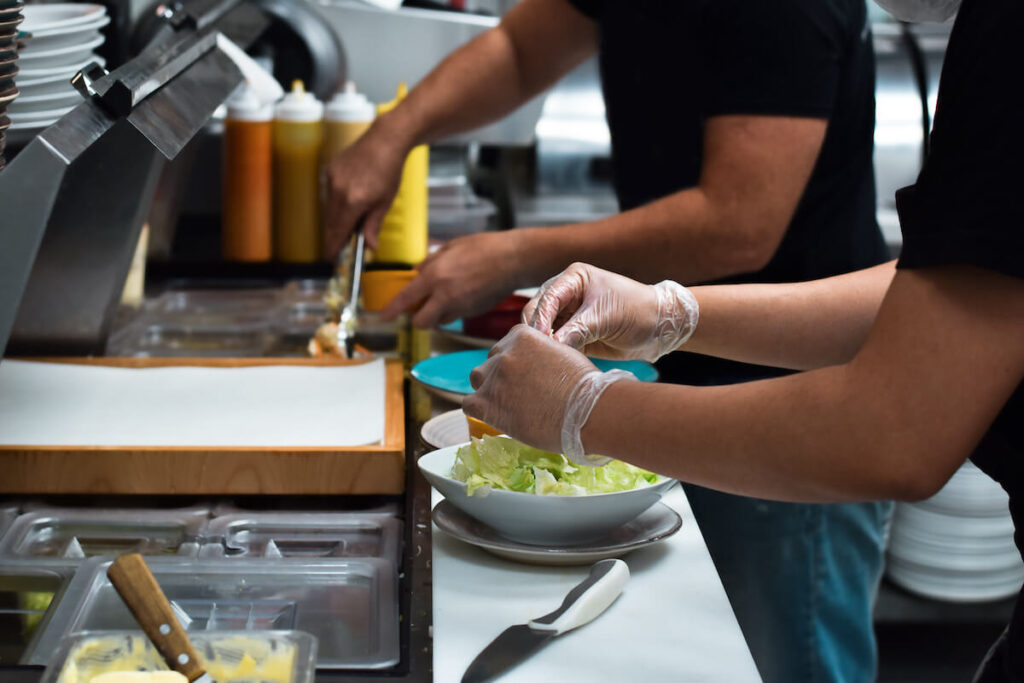Staff are key to the success of a restaurant. With the recent labor shortage, it’s important to keep your team happy to ensure they work efficiently and improve your employee retention levels. A study surveying foodservice staff found that restaurants with more complex menus made it more difficult to keep up with food safety requirements. In turn, this often affected their job motivation and satisfaction and eventually led to burnout. Although the hospitality world is known for its high-octane culture, there are still many ways managers and owners can improve their work environment.
As restaurants engage in digital transformation—incorporating technology into their operations and business model—workplace satisfaction stands among the top priorities that technology adoption seeks to achieve. When used in a restaurant setting, technology can automate many of the otherwise time-consuming and repetitive tasks that lead to stress and burnout. This additional deployable labor eases workloads, raises productivity for other tasks, and improves overall workplace satisfaction. The key to using digital transformation to elevate workplace happiness is identifying major pain points, then implementing solutions that solve them directly, while taking into account important factors like budget and guest experience.
Streamlining training
Getting staff to follow structured policies and procedures can be a daunting task, but a necessary one to not only run an efficient restaurant but also follow necessary laws and safety regulation. Onboarding new team members and holding refreshers for existing staff, however, can be tedious and expensive. You need to consider the managers who will be organizing these training sessions, the staff who will teach the new staff, and also the wages that come with extra work. Consequently, training can be stressful and as many as 39% of staff aren’t properly trained as a result.
Technology can help alleviate additional difficulties through the use of artificial intelligence (AI). Case in point, Domino’s has adopted different digital innovations to help track orders, give estimated cooking and delivery times, and reduce the need for labor, allowing staff to adjust their schedules so they can train and upskill new hires.
Automating tedious tasks
With the advent of technology, automation has become a welcome development in the restaurant industry. In a recent report, as many as 50% of US restaurant operators plan on adopting a form of automation technology in the next two to three years, which is unsurprising given its convenience and the high return on investment. Since automation and AI advancements are used to perform tasks without human intervention, trend reports note that 38% of consumers predict these technologies will benefit customer service in the long-run. In addition, this automation would also benefit restaurant employees as AI takes over some basic restaurant functions, leading to an ease in labor pressure and reducing their stress.
Recently, Fazoli’s has experimented with new technology to combat the industry-wide labor shortage. Implementing self-contained fryers helped increased back of house efficiency while rolling out AI voice ordering automated their drive-thrus. They even brought back phone ordering, a valuable sales channel. These automations freed up staff to focus on fulfillment and in-person customer service, ultimately boosting profits an astonishing 25%. In an industry notorious for low margins, these numbers paint a game-changing picture for the future of restaurants.
With an increasing preference for takeout and delivery, voice-based AI technology has been essential for capturing orders during peak hours. Automating the order-taking process has been a win-win, where customers no longer have to wait on hold for a busy team member to pick up the phone, and staff aren’t forced to juggle taking orders while also making them. Instead, team members can devote their attention to production, without getting distracted by a ringing phone or an incoming drive-thru order every few seconds. For those who work behind a desk, it’s the equivalent of being able to focus on a big project without emails and slack messages distracting you every few seconds. Imagine the difference in mental energy you can dedicate to the most important thing in front of you, and you’ve got a better understanding of how voice AI can reduce stress and elevate quality of life for restaurant staff.
Easing communication flow
Oftentimes, communication can be difficult in busy restaurants. Staff can struggle with back-of-house problems, like proper scheduling and inventory management. Through the use of technology, these systems can be easily monitored digitally. In the case of Sling, an employee scheduling platform, it’s easier to organize complex shifts and provide staff with proper knowledge and clear expectations.
On the customer-facing side of the business, it can likewise be difficult for staff to serve patrons properly, especially if they’re trying to balance many other tasks at the same time. Using voice AI as an example again, both staff and guests gain more effective ways to communicate with one another. Guests can place their orders without disrupting busy staff, helping those team members focus on order accuracy and ultimately providing a better dining experience. In an environment where guest complaints come out all too often, bringing these issues to a minimum by improving performance and service quality is another surefire way to elevate staff dynamics and job satisfaction.
Getting started
Digital transformation can seem overwhelming, especially for many restaurant owners and operators who simply want to focus on serving great food without changing their way of doing things. Incorporating technology into your restaurant, however, can be a surprisingly easy task. Voice AI, for example, can require little more than sharing your menu, letting the provider work behind the scenes, and then flipping the switch a few weeks later with zero staff training and no new hardware needed. ConverseNow, the leading voice AI provider for restaurants, is live in more than 1100 stores across 40 states. Learn more at ConverseNow.ai
Written by Sarina Torey




